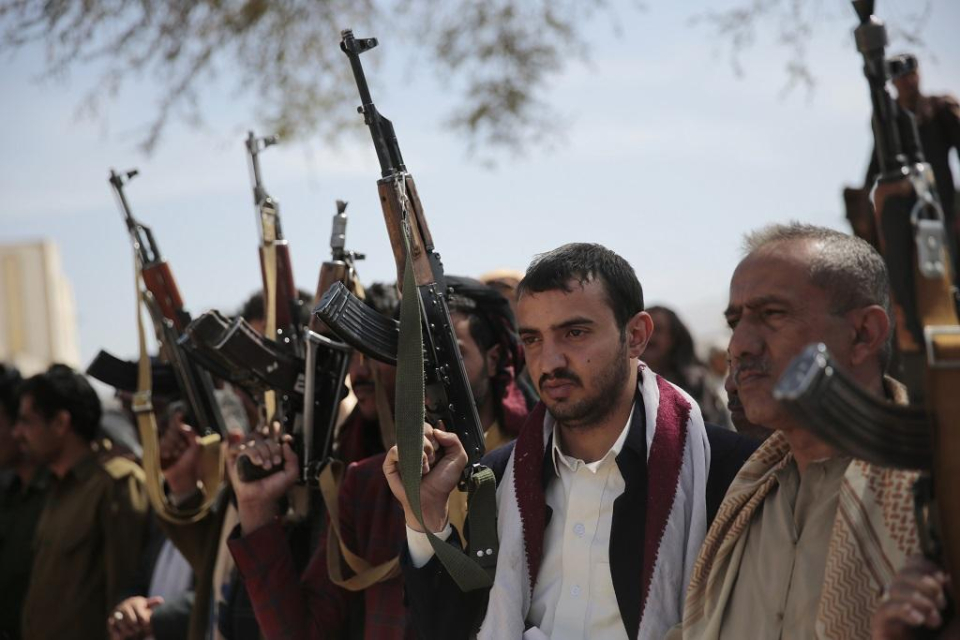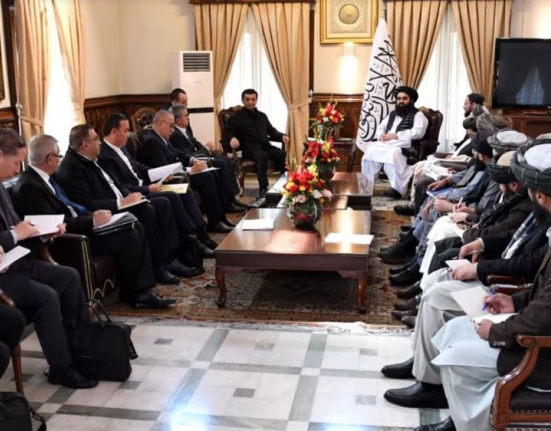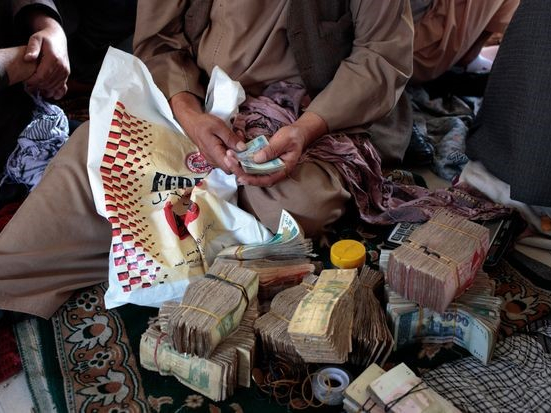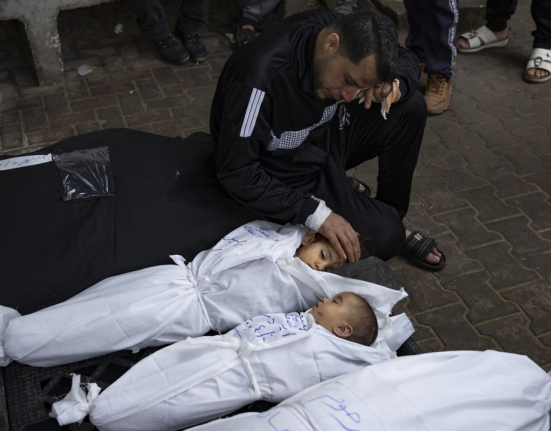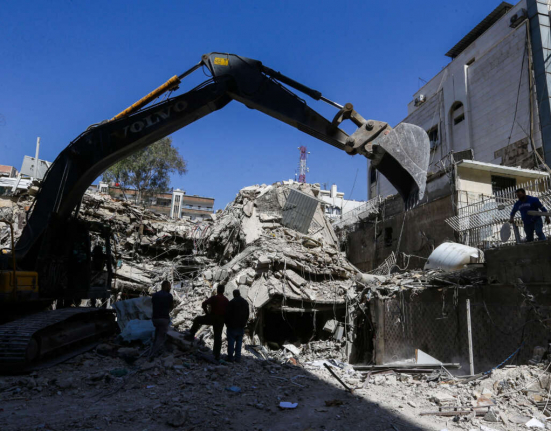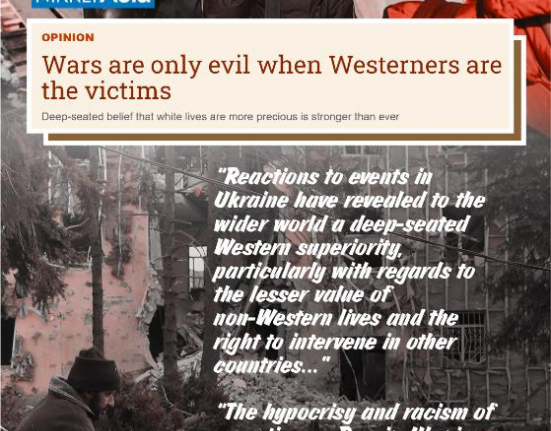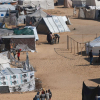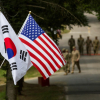On February 27, the 115th commercial flight since May of last year landed at Sanaa International Airport in the capital of Yemen. Children at a nearby hospital were exhilarated as the plane descended overhead, according to a local journalist, and even elderly patients smiled.
The plane is a tangible representation of the current de facto truce between Sanaa’s Houthi-led government and Saudi Arabia. Between March 2015 and March 2022, a Saudi-led military coalition conducted more than 2,500 air raids on Yemen, using American-made bombs and with the assistance of the U.S. military. As long as the cease-fire holds, Yemenis need not fear the sound of planes overhead.
Although the truce expired in October, both sides have largely kept to its terms. After closing it to commercial travel in 2016, the Saudi-led coalition permitted Sanaa Airport to resume limited operations. Before last April, the Saudi-led coalition periodically blocked petroleum imports through the Houthi-controlled port of Hodeidah, sparking acute fuel shortages that deepened the existing humanitarian crisis, which the U.N. has long called the worst in the world. Yemen imports 90 percent of its food. Without fuel for transportation, prices for basic food items soared. Meanwhile, hospitals were forced to turn off ventilators and other lifesaving equipment when they ran out of fuel for generators. Under the truce, the Saudis have allowed fuel to enter Hodeidah port, granting a slight reprieve.
The lull in conflict offers a brief window to achieve a more prolonged peace. Currently, rumors abound that Riyadh may be on the verge of a deal with Yemen’s Houthis, which would allow the Saudis to finally withdraw from the conflict after almost eight years trying to defeat the rebel group. As I show in new research for the Quincy Institute, this is a narrow opportunity to end U.S. involvement, while promoting stability and avoiding additional bloodshed.
Sen. Bernie Sanders (I-VT) took a step in this direction when he introduced a war powers resolution last December. But he quickly withdrew the resolution in response to stiff opposition from the White House. With talk of a Saudi-Houthi deal, now is the right time for Sanders to reintroduce the war powers resolution and finally end U.S. support for the brutal Saudi war of aggression on Yemen. This should be accompanied by robust humanitarian aid and efforts to stabilize the region.
Unfortunately, the U.S. is currently doing the opposite: quietly pulling back its humanitarian aid, without taking the necessary, decisive action to withdraw military support during this fleeting lull in fighting.
While Saudi bombs are not currently falling and fuel is finally making its way inland from Hodeidah, the humanitarian catastrophe in Yemen has only deepened. The decline in violence has contributed to a drop in attention, exacerbating “donor fatigue” as competing crises divert funding away from the desperately impoverished Arab state.
Late last month, Secretary of State Antony Blinken announced at a donor conference in Geneva that the U.S. would send an additional $444 million to Yemen. He called on other countries—including wealthy Gulf States like Saudi Arabia and the United Arab Emirates (UAE), which also bear responsibility for Yemen’s agony—to give more. Yet he failed to mention that the U.S. will be sending 25 percent less aid than last year, and next year may cut aid by as much as 40 percent, despite committing $110 billion to Ukraine.
This is a narrow opportunity to end U.S. involvement, while promoting stability and avoiding additional bloodshed.
Meanwhile, the conference raised only about a quarter of the $4.3 billion it sought for Yemen. Last year, the U.N.’s World Food Program already slashed the assistance it provides for 13 million Yemenis, cutting back food aid by 50 percent for five million people, and by 75 percent for eight million. This followed cuts from 2021, in a country that ranks as the worst in the world for hunger. Without this aid, civilians will starve.
Prior to the truce, the Saudi-led coalition had bombarded and blockaded Yemen for seven years: In addition to deaths caused directly by falling bombs, the starvation and disease wrought by the devastation of war had killed almost 400,000 Yemeni civilians as of 2021. Previous attempts to achieve a cease-fire had failed.
The truce has held past its official expiration because the war had become a mutually painful stalemate following Houthi attacks last year on sensitive targets in Saudi Arabia and the UAE. From the perspective of Abu Dhabi, Houthi attacks not only endangered critical infrastructure, but threatened to puncture the carefully crafted image of luxury and stability on which the UAE stakes its reputation. For Saudi Crown Prince Mohammed bin Salman, Houthi missiles could derail his plan to transform the Kingdom through foreign investment and tourism.
Since both the UAE and Saudi Arabia are seeking to avoid the possibility of future Houthi attacks, they may agree to officially end hostilities in Yemen. The UAE officially withdrew troops in late 2019, although it continues to fund and outfit militia groups on the ground.
In a possible signal of progress, on February 26, the Saudi-led coalition permitted the first general cargo ship to dock at Hodeidah since 2016. Since 2018, the Saudis have blocked almost all containerized goods, according to the U.N. Verification and Inspection Mechanism, which monitors imports to Yemen to prevent Iran from smuggling weapons to the Houthis. Although Houthi leader Abdelmalik al-Houthi said on February 17 that “we are still in a phase of war with the coalition of aggression, and there is no agreement yet,” the ship’s arrival appeared to indicate Saudi efforts to address Houthi demands to open up access to Hodeidah port, potentially as a confidence-building measure for a longer-term agreement.
Yemen experts are divided as to what a Saudi-Houthi deal could mean for the war-stricken country. Some fear that a Saudi exit would leave the Houthis as the strongest military actor, handing control of northern Yemen to a group that has consistently blocked humanitarian aid and suppressed human rights, especially targeting women, journalists, and religious minorities. Yemen’s internationally recognized government, now represented by a group of eight men put in place last year by Saudi Arabia after the Saudis ousted exiled president Abdrabbuh Mansur Hadi, remains weak and internally divided, incapable of challenging the Houthis without foreign assistance.
Others fear that the Saudis’ withdrawal could plunge the country into greater violence due to resistance to Houthi control. Yemenis who fought alongside the Houthis against foreign aggression could pivot to overthrowing Houthi rule. Reports of dissension among the ranks of the Houthis’ approximately 200,000 troops demonstrate the potential for infighting.
The Houthis themselves have relied heavily on the legitimation provided by foreign military action, portraying themselves as defending Yemen against American, Saudi, and Emirati aggression. In an interview, Greg Johnsen, former member of the U.N.’s Group of Eminent Experts on Yemen, said that the Houthis “probably underestimate how difficult it will be to consolidate control in a post-Saudi, post-UAE phase.” If the Houthis are left to govern, they will face the consequences of the violence they have wreaked upon the population.
Other experts, such as Princeton professor Bernard Haykel, posit that the Houthis have effectively cemented control over much of the former North Yemen by empowering tribal leaders they consider loyal, while removing or assassinating those opposed to their rule. The Houthis’ political project—to establish the political authority of the sada, or descendants of the Prophet Mohammed—represents a return to Yemen’s pre-republican era, which ended in the 1960s with the overthrow of the Zaydi imamate. The Houthis have transformed educational curricula to align with their ideological project, escalating the potential for sectarianism between Yemen’s Zaydi Shias, who constitute approximately 35 percent of the population, and the Sunni majority.
If Saudi Arabia chooses to begin dropping bombs again, it would do so with U.S. support. Furthermore, a future presidential administration could again escalate U.S. support for violence, as President Trump did by lifting Obama-era restrictions on weapons designed to target civilians. Therefore, the U.S. should prioritize ending its support for the Saudi-led coalition. A war powers resolution would end the logistical and maintenance support the U.S. provides for Saudi aircraft, approximately two-thirds of which are American-made and operate only with U.S. assistance.
Meanwhile, the U.S. should also significantly increase humanitarian aid. The U.S. has profited handsomely from the sale of weapons to the Saudis and Emiratis, many of which rained down upon Yemen’s civilian population. Lawyers for the administration already fear that the U.S. could be implicated in war crimes in Yemen. Shifting the U.S. role from that of directly enabling Saudi aggression to providing significantly more aid to starving children would at least begin to address the enormous crime the U.S. has committed against Yemen.
Source: American Prospect

